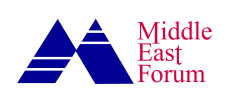Fifty years ago, the Turkish Army invaded Cyprus, seizing over one-third of the island and causing mass displacement. Thousands of Greek Cypriots were forced to flee their homes in the north, while Turkish Cypriots moved to the occupied areas, creating a de facto partition of Cyprus. With the reunification of Berlin in 1990, Nicosia became Europe’s only divided capital.
While the Turkish government and its proxies in occupied Northern Cyprus claim that Turkey’s interest is to protect the Turkish Cypriot community on the island, Turkey’s actions suggest otherwise. Ankara has overwhelmed the local Turkish community with settlers from mainland Turkey who have no prior ties to the island, while at the same time has undertaken actions that threaten the secular identity of the Turkish Cypriots and drastically change the overall character of the region.
The Külliye complex and “Nation’s Mosque” are part of a larger infrastructure initiative meant to reflect Turkey’s influence in Northern Cyprus.
The Turkish government and its proxies seek to transform the cultural and political landscape of Northern Cyprus. One prominent project is the Turkey-funded Külliye complex in Nicosia’s occupied Ayios Dhometios neighborhood. With an estimated cost of 2.5 billion Turkish lira ($71 million), the complex includes a “presidential palace,” parliament, mosque, park, and courthouse. Together, these structures occupy more than two million square feet for the government buildings, and five million square feet for the mosque and its surrounding garden. Designed in an Ottoman architectural style, the project aims to symbolize sovereignty and cultural identity.
Despite delays caused by social opposition and legal challenges, construction that Turkish President Recep Tayyip Erdoğan announced four years ago is well under way. The Turkish Cypriot press suggest the project could be complete in the first weeks of 2025. During my recent visit to the site, both the parliament and presidential palace buildings were visible and work on the mosque showed significant progress.
The Külliye complex and “Nation’s Mosque” are part of a larger infrastructure initiative meant to reflect Turkey’s influence in Northern Cyprus. Unlike traditional mosques, which served as community centers emphasizing social welfare and spiritual growth, the Turkish Cypriot community has criticized this project for its perceived political and symbolic functions. Many Turkish Cypriots oppose the project because of its potential implications for their own cultural identity and political autonomy. The scale and design of these structures heighten concerns about Turkey’s growing efforts to promote religious identity in Northern Cyprus, where the indigenous Muslim population was traditionally moderate. The Turkey-backed Northern Cypriot regime builds dozens of new mosques annually, sparking Islamization fears.
Others protest the project’s cost during a period of economic crisis, arguing that a government serving the people would redirect funds to hospitals, schools, and other essential infrastructure. Professional associations, political parties, and non-governmental organizations together have protested the Külliye construction.
The construction also runs roughshod over legality. The Turkey-backed occupation regime builds on land in Ayios Dhometios to which it has neither title nor necessary building permits. Reports in the Turkish Cypriot Press indicate that 15 acres of the land belonged to an Armenian family displaced in 1957. The family has not offered consent nor received compensation. Additionally, Turkish Cypriot landowner Canev Denner has filed legal action over 2.2 acres, alleging unlawful expropriation. While the court has urged the parties to reach an agreement, there has been no resolution.
While American and European diplomats may view the Cyprus conflict as frozen, Turkey’s recent development activities suggest Ankara seeks to thaw the frozen conflict into something far hotter.
Turkey also invests in educational and cultural initiatives to further its footprint, such as the “Bilim Lefkoşa” science center to provide educational programs and workshops for children ages six to fourteen in the historic Armenian neighborhood of Nicosia. Selçuk Bayraktar, son-in-law of Erdoğan and head of the T3 Foundation, oversees its operations. The center utilizes adjacent buildings of the Armenian Church of the Holy Virgin Mary (Notre Dame de Tyre), which previously served as schools for the Armenian community. The United Nations Development Programme’s Action for Cooperation & Trust and the U.S. Agency for International Development funded the restoration of the Gothic cathedral between 2009 and 2012, earning it the Europa Nostra Award in 2015. Critics argue that the science center’s presence risks overshadowing the historical and cultural significance of the Armenian quarter.
Turkey’s colonization of Cyprus is a half-century old but while American and European diplomats may view the Cyprus conflict as frozen, Turkey’s recent development activities suggest Ankara seeks to thaw the frozen conflict into something far hotter. Turkey may believe it can revise the status quo gradually to gain ground on Cyprus, but its efforts to reshape the occupied zone in its own image and subordinate indigenous Turkish Cypriots to Turkey’s interests ultimately should force the United States and Europe to stand up and recognize the broader context: What Turkey now does in Cyprus is not limited to the island, nor are its roots in the 1974 Cyprus conflict; rather, Turkey’s violations of the Cypriot status quo have much more to do with its revisionist behavior and demands in the Aegean, northern Syria, northern Iraq, and Armenia’s Zangezur corridor.







